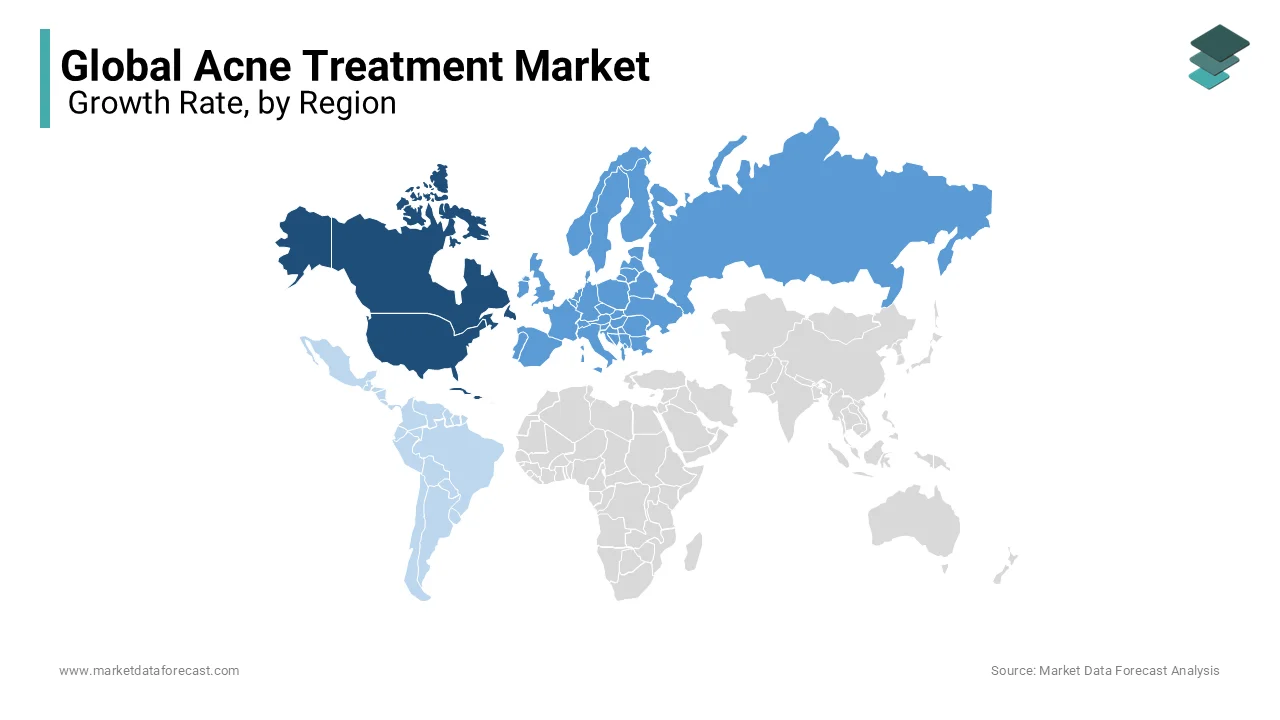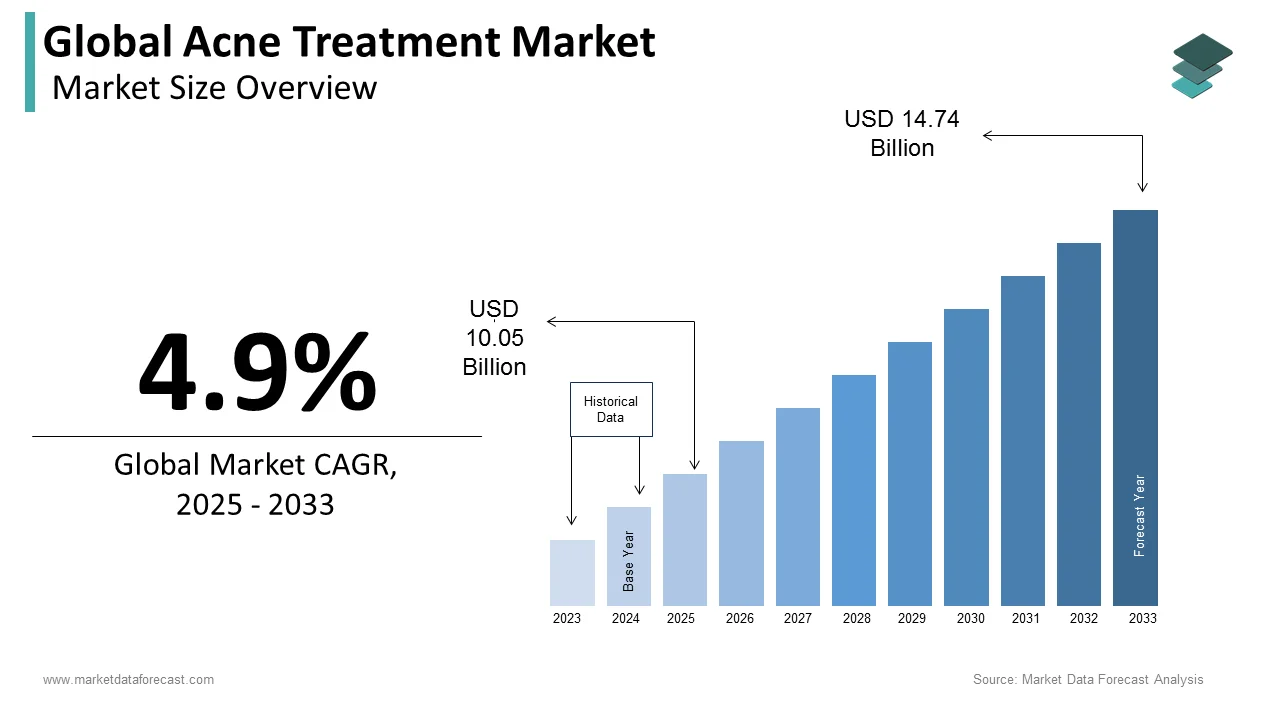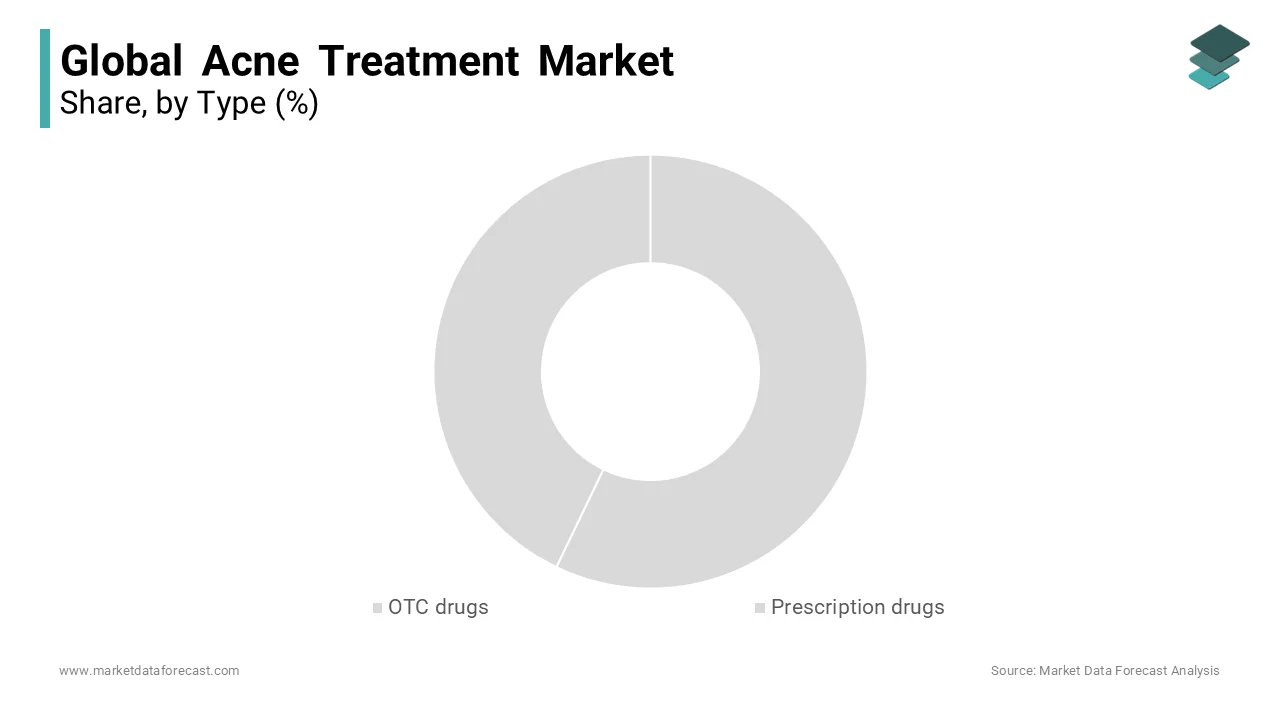Global Acne Treatment Market Size, Share, Trends & Growth Forecast Report By Type, Route of Administration, Drug Class and Region (North America, Europe, Asia-Pacific, Latin America, Middle East and Africa), Industry Analysis From 2025 To 2033.
Global Acne Treatment Market Size
The global acne treatment market was worth US$ 9.58 billion in 2024 and is anticipated to reach a valuation of US$ 14.74 billion by 2033 from US$ 10.05 billion in 2025, and it is predicted to register a CAGR of 4.9% during the forecast period 2025-2033.
Acne is caused due to the clogged hair follicles on the skin with oil, sebum, and dead skin cells. It is an inflammatory disorder from plugging the skin's pores, also called pimples or zits. Acne commonly occurs in teenagers and young adults and can be witnessed in puss-filled pimples, blackheads, or red bumps on the skin. They mainly occur on the face but can also occur in the back, chest, and shoulder areas. Acne occurs due to excessive sebum production from the oil glands and the growth of bacteria and dead cells in the pores. Also, hormones, family history, and reactions to certain medications can cause acne. In addition, the habits of overeating junk food, environmental pollution, squeezing existing pimples and blemishes, excessive stress, and too much scrubbing can encourage the growth of acne. Acne treatment most commonly includes creams and external applications; however, if stubborn acne does not leave the skin, the doctors may recommend antibiotics and other acne drugs. These acne drugs are generally recommended by dermatologists who prescribe a treatment regime with different course durations based on the patient's situation.
MARKET DRIVERS
Rising Acne Cases and Growing Demand for Treatments
The growing patient population suffering from acne primarily drives the global acne treatment market growth. Acne is prevalent and can be caused by a range of reasons. However, a significant spike has been noticed in acne incidence in the recent past. For instance, according to the National Centre for Biotechnology Information, acne affects around 9.4% of the population worldwide. According to the American Academy of Dermatology, around 50 million in the United States have acne problems yearly. Noticed, the majority of the cases are occurring in teenagers and adults. Also, acne may act at any age and continue from 30 to 40 years. More than 1.2 billion USD in business happened to acne treatments and medications in the United States alone in 2013.
Unhealthy Lifestyles and Increasing Focus on Skincare Drive Market Growth
In addition, unhealthy lifestyle changes, which may cause pimples and blackheads in most youth populations, are significant factors that accelerate market growth. Many acne drugs are readying to receive approval. It clears the competition in the market during the forecast period to turn fiercer. The majority of the female population worldwide is concerned about their facial problems. The growing desire to have beautiful looks, especially among youth, is another major factor driving the market growth. The increase of common long-term skin problems growing worldwide is one factor that drives the market. Pollution is also one factor that increases skin diseases that accelerate the market for acne treatment.
Diverse Treatment Options Propel Acne Treatment Market
The different types of topical, oral, and therapeutic medications available for different acne patients promote the market's growth. For example, currently, there are four topical medications, Retinoids, Azelaic acid and salicylic acid, Dapsone, and Antibiotics for individual problems. In addition, there are also four different types of oral medications, combined oral contraceptives, Anti-androgen agents, Antibiotics, and Isotretinoin, all working for specific problems. Additionally, therapies like drainage and extraction, chemical peel, light therapy, steroid injections, etc., support the treatment. Therefore, the several different treatment options support the market's growth.
MARKET RESTRAINTS
Side Effects and Alternative Treatments Limit Acne Market Growth
Side effects associated with the usage of acne drugs are one of the major factors hindering the market growth, due to which the adoption of these drugs is less. In addition, the availability of alternatives to acne drugs, such as laser therapies, further inhibits the market's growth rate.
REPORT COVERAGE
|
REPORT METRIC |
DETAILS |
|
Market Size Available |
2024 to 2033 |
|
Base Year |
2024 |
|
Forecast Period |
2025 to 2033 |
|
CAGR |
4.9% |
|
Segments Covered |
By Type, Route of Administration, Drug Class, and Region. |
|
Various Analyses Covered |
Global, Regional, and country-level analysis; Segment-Level Analysis, DROC; PESTLE Analysis; Porter’s Five Forces Analysis, Competitive Landscape; Analyst Overview of Investment Opportunities |
|
Regions Covered |
North America, Europe, APAC, Latin America, Middle East & Africa |
|
Market Leaders Profiled |
Pfizer, Inc., GlaxoSmithKline plc, Novartis AG, Merck & Co. Inc., Amgen, Inc., Abbott Laboratories, AstraZeneca, Eli Lilly and Company, Mylan N.V., and Daiichi Sankyo Company, Ltd., and Others. |
SEGMENTAL ANALYSIS
By Type Insights
Based on type, the Over the counter (OTC) drugs segment is expected to account for the majority share in the global acne treatment market during the forecast period. Due to the increasing occurrence of the patient population using these OTC drugs as they are suitable for purchasing and cheap, it boosts the market.
On the other hand, the prescription drugs segment is forecasted to grow by 6.3% during the forecast period. Antibiotics are prescription products combined with topical retinoids, forecasted to accelerate market growth.
By Route Of Administration Insights
Based on the route of administration, the topical segment is growing at a CAGR of 3.6%. The high availability of products, success rate, and very few adverse effects drive this segment's growth.
The oral segment is also expected to have grown during the forecast period because topical medicines fail to perform or give the required results to the patients. However, using several oral medications like antibiotics should be moderated as excessive use could lead to antibiotic resistance which can delay treatment. Therefore, oral treatment is not the first administration choice for these drugs.
By Drug Class Insights
The Anti-inflammatory segment holds a significant market revenue share based on drug class. Therefore, it is likely to maintain its leading position during the period.
The Topical retinoid segment is also expected to support the market's growth due to high approval rates for retinoid drugs. The antibiotics segment is also expected to grow due to adequate responses. Often the doctor will recommend retinoids and antibiotics in combination for positive results. The hormonal agent segment is also expected to grow as they are often recommended in combination with medications, especially for women.
REGIONAL ANALYSIS

In 2024, the North American acne treatment market had the most significant global market share and was likely to continue its domination throughout the forecast period. Within North America, the United States held the majority of the share in 2024. It is due to the growing usage of skincare products, early approval of acne medication products, and prescription medicines usage.
The acne treatment market in Europe stands second in accounting for the leading share of the global market. The growing awareness among the European population regarding the available treatment options for acne and increasing efforts by the market participants to promote their offerings to the public are majorly acne treatment market in Europe. Galderma, Valeant Pharmaceuticals, Johnson & Johnson, and Pfizer are some of the notable companies in the European market. These companies offer various products, including topical creams, gels, antibiotics, and drugs. During the forecast period, the European market is expected to register a healthy CAGR as the European population is more willing to seek effective solutions to treat acne.
The acne treatment market in Asia-Pacific is likely to grow with the highest CAGR during the forecast period due to the increase in the ability to afford, the increase in the amount spent on healthcare, and the growing awareness of the safety of acne medication products.
The Latin American acne treatment market is predicted to hold a considerable share of the global market during the forecast period. The acne treatment market in MEA is estimated to grow at a moderate CAGR in the coming years. In the Middle East & Africa, the Anti-Inflammatory segment is likely to show significant growth. Therefore, during the forecast period, this Anti-inflammatory acne segment is the most appealing in the Middle East & African region of the Acne treatment market.
KEY MARKET PLAYERS
Some major companies dominating the market by their products and services include Pfizer, Inc., GlaxoSmithKline plc, Novartis AG, Merck & Co. Inc., Amgen, Inc., Abbott Laboratories, AstraZeneca, Eli Lilly and Company, Mylan N.V., and Daiichi Sankyo Company, Ltd.
RECENT MARKET HAPPENINGS
-
In February 2023, TheraClear X device by Strata skin science, which has received approval from the FDA, will have a live demonstration with a patient in colorado. In addition, the company director will elaborate on the device's functions and uses. The company claims the device can treat several acne problems, including acne vulgaris, comedonal and pustular problems.
-
In January 2023, the "AH-ha! its acne hormones" campaign being run on TLC by dermatologist DR. sandra lee, otherwise known as DR. pimple popper, is being partnered with sun pharma. The pharmacy launched the campaign to stress hormones' role in supporting acne growth.
- In January 2023, Torri pharmaceuticals entered an agreement with Nogra pharmaceuticals, an innovative clinical-stage biotechnology company that works mainly on immune-inflammatory-mediated diseases, to launch new treatment options for acne vulgaris in the Japanese market.
MARKET SEGMENTATION
This research report on the global acne treatment market has been segmented and sub-segmented based on the type, route of administration, drug class, and region.
By Type
- OTC drugs
- Prescription drugs
By Route Of Administration
- Topical
- Oral
By Drug Class
- Antibiotics
- Anti-Inflammatory Drugs
- Anti-Microbial
- Combination Drugs
- Hormonal Agents
- Oral Retinoid
- Topical Retinoid
By Region
- North America
- Europe
- APAC
- Latin America
- MEA
Frequently Asked Questions
What is the size of the acne treatment market?
The global acne treatment market size is estimated to be worth USD 14.74 billion by 2033.
Which region had the major share of the global acne treatment market in 2024?
The North American market accounted for a major share of the worldwide market in 2024.
Which region is expected to grow at the fastest CAGR in the global acne treatment market in the coming future?
The APAC region is predicted to showcase the fastest CAGR in the worldwide market during the forecast period.
Who are the major players in the acne treatment market?
Pfizer, Inc., GlaxoSmithKline plc, Novartis AG, Merck & Co. Inc., Amgen, Inc., Abbott Laboratories, AstraZeneca, Eli Lilly and Company, Mylan N.V., and Daiichi Sankyo Company, Ltd are some of the major companies in the acne treatment market.
Related Reports
Access the study in MULTIPLE FORMATS
Purchase options starting from $ 2500
Didn’t find what you’re looking for?
TALK TO OUR ANALYST TEAM
Need something within your budget?
NO WORRIES! WE GOT YOU COVERED!
Call us on: +1 888 702 9696 (U.S Toll Free)
Write to us: [email protected]


